In all the history of North Omaha, one neighborhood that was home to a mansion, theatres, grocery stores, synagogues and churches shows fewer signs of its vibrant, vital past than any other neighborhood. The Long School neighborhood existed for more than 125 years before it was redeveloped, then redeveloped again. Following is a history of the Long School neighborhood in North Omaha.
Starting a Neighborhood

Eben Knapp Long arrived in Omaha on June 6, 1868, to work for the new Union Pacific Railroad. Seeking to lend his abilities to the young city’s operations, he became a justice of the peace and served on the Omaha school board for 14 years. It was because of that involvement that a new school was named for him in the 1890s. He died in 1913.
The Long School neighborhood is located in North Omaha from Hamilton Street on the south to Erskine on the North; North 24th on the east and the North Freeway on the west, and it has a total of 30 blocks. Houses started getting built in the neighborhood as early as the 1860s. However, it wasn’t until Long School was built that things really got underway. This is a history of the neighborhood.
There were several important intersections in the Long School neighborhood. One of the most important corners was at North 26th and Franklin Streets. Located at this intersection was St. John’s Episcopal Church. Founded in 1885, the church was located on the northwest corner of the intersection. In 1927, their new building opened at North 30th and Belevedre Boulevard. In 1987, St. John’s merged with St. Phillip the Deacon Episcopal Church to form the Episcopal Church of the Resurrection. On the northeast corner of the intersection was a commercial building built by a man named W. B. Wood around 1889. Home to several storefronts on the first floor, there was a boarding house on the second floors. The building was condemned and demolished in 1972. A third building at the intersection was the Long School.
A Short History of Long School

Built at 2520 Franklin Street in the late 1880s, the original Long School opened in 1888. Starting in a wood frame building, there were more than a hundred students in the small structure within a few years. In 1891, the school district added more ground to the site and built a wooden addition to the wooden school.
In 1892, a new building for Long School was approved by the Omaha school district and designed by John Latenser, Sr. It was a brick building with eight classrooms for kindergarten through eighth grade and was located on the northeast corner of North 26th and Franklin Streets.
A 1902 report by the State of Nebraska said that, “The furniture, blackboard and interior finish are all of the best.” It also noted the play rooms in the basement; furnace heating; and the presence of cloak rooms and toilet rooms throughout the building.
Within a few years, Long School became the focal point of the surrounding neighborhood, hosting events and classes for families and residents, as well as regular school activities. Serving the neighborhood’s diverse residents, there were Scandanavian, Eastern European and African American students there for dozens of years.
However, that all changed by the 1930s, when Long School became one of Omaha’s “black schools,” which were the four schools Blacks were allowed to attend in the Omaha School District (out of 50+ at the time). In 1952, Long School was identified as being the only school in Omaha with a 100% African-American student body population. The first two African-American teachers in public education in Omaha were assigned to Long School in 1940. In 1947 the first African-American principal in Omaha, Eugene Skinner, was appointed to the school.
It was 1953 when the school board decided to move the seventh grade from the building (eighth grade had already been moved out) because of “extreme overcrowding.”
In the 1970s, the Omaha school district closed the building and demolished Long School. It wasn’t rebuilt or replaced afterwards, and instead, suburban tract style houses sit in its place today. The students who went there now generally go to Kellom, Lothrop or Howard Kennedy Schools, instead.
A Short History of the Neighborhood
In 1856, the area that became the Long School neighborhood started as part of a controversial scheme called Scriptown. Omaha boosters scraped together a slab of land to offer to Nebraska Territory legislators in order to convince them to keep the capitol in Omaha when statehood arrived. They awarded legislators land for their agreement to do it. However, their scheme didn’t work and they lost the capitol to Lincoln in a complicated battle. Scriptown didn’t amount to much else, either.
Starting in the 1870s, homes began filling in the blocks carved from the Scriptown sham. A long horse ride from downtown Omaha, the first homes generally belonged to white collar industrialists and aspiring businessmen of all sorts. By the 1880s, Omaha’s population was booming and people needed places to live. The area between North 24th and North 30th, from Hamilton north to Lake Streets became important new blocks. At the same time, North 24th Street became a vital and vibrant commercial and entertainment area. It was packed with grocers, theatres, blacksmiths, hardware stores, clothing shops and more. Working class people mingled freely with the wealthy, and the commercial strips along North 24th and Cuming Street to the south began growing in earnest. Early workers living in the Long School neighborhood had jobs at the Storz Brewery, lumber yards, bakeries, grain mills, brick makers and similar industries.

Early ethnic churches in the neighborhood included the German Immanuel Baptist Church at North 26th and Hamilton Streets and the Norwegian-Danish Methodist Church at 1713 North 25th Street. Historic Black churches in the neighborhood include Cleaves Temple C.M.E. Church at 2431 Decatur and the former Bethel A.M.E. Church at 2428 Franklin Street. The historic Robinson Memorial Church of God in Christ was built at 2318 N. 26th Street in the 1940s, and listed on the National Register of Historic Places in 1993, as well as designated an Omaha Landmark the year before. There was a large population of Russian Jews in the Long School neighborhood. Several synagogues were located in the neighborhoods around the Long School, to the south and east. Beth Hamedresh Ados Yeshuren Synagogue was at 25th and Seward, though. The house at 1512 North 25th Street was used as a ritual bath house for the Jewish Old Folks’ Home, which was around the corner at 2504 Charles Street.
In the next two decades, the neighborhood hosted Jews, Scandinavians, Germans, English, Americans and others who flooded into small, medium and big houses throughout the neighborhood. Schools were built, churches and synagogues erected and businesses were started, as well as the family and friends who grew in the Long School neighborhood. The neighborhood’s namesake was built in the early 1890s, and the place became the definition of close-knit during this era.
Easter Sunday Tornado

On Easter Day 1913, a tornado ravaged the area. More than 100 people were killed within a 10 block radius of North 24th and Lake Streets, which is in the northeast corner of the Long School neighborhood. The Franklin Theater was wrecked by the tornado. Thousands of buildings were demolished, including homes, faith communities, businesses and more. The devastation was nearly complete.
The fabric of the community was so strong that most businesses and homes were recovered within a year. There were ads in the local paper that said some obliterated businesses were rebuilt within days of the tornado.
White Hatred

More damaging than any tornado to the Long School neighborhood, though, was the racism and hatred that drove the events of 1919, and the effects of redlining afterwards.
In September of that year, a white mob lynched an African American worker named Will Brown. Along the way, they destroyed the Douglas County Courthouse, beat many African Americans and whites, and nearly lynched Omaha mayor Ed Smith. The mob then turned north into neighborhoods where Blacks lived, including the Long School neighborhood, in order to continue their campaign of terror.
They were only stopped by the Army. Facing a mob with an estimated 1,000 guns stolen from downtown stores, a platoon was brought in from Missouri to establish and maintain martial law in Omaha for several days. Telling Blacks they could only protect them if they stayed within the boundaries of North 30th, Cuming, North 16th and Ohio Streets, the Army established outposts on each corner of the jurisdiction. The mob eventually broke up, and whites went home. Although the Army eventually left, too, the reality is that the lines they drew never changed.
Instead, over the next 50-plus years, real estate agents, insurance sellers, landowners and bank lenders all colluded to keep African Americans living within this area through a practice called redlining. It literally involved these whites agreeing to keep Blacks within one area by drawing a red line around the area on a map. It worked.
Growing In Spite
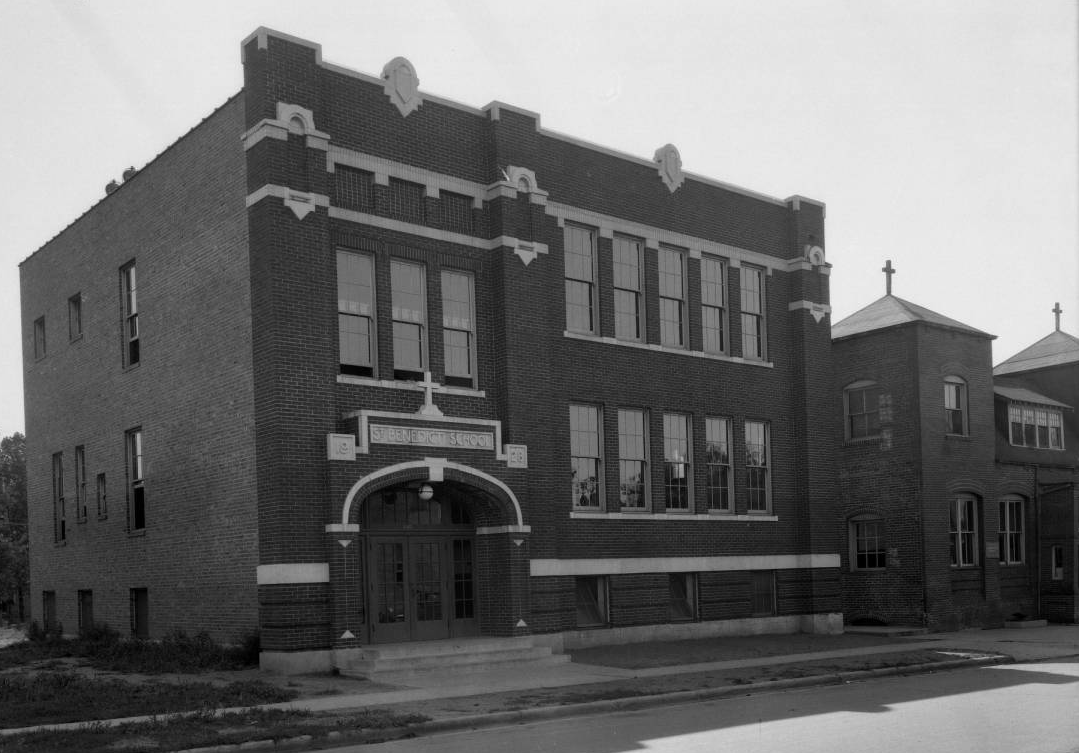
The Long School neighborhood grew in spite of white hatred. Starting their own businesses and shopping at white-owned businesses that still served them, African Americans in North Omaha supported a thriving commercial district around 24th and Lake, and extending along North 24th south to Cuming. Businesses in the neighborhood included the Ritz Theatre, which catered exclusively to Blacks, as well as the Dreamland Ballroom, the Omaha Star, and others. There were literally dozens and dozens of business along North 24th in the Long School neighborhood, all the way into the 1970s.
With the effects of the Civil Rights movement taking hold in Omaha, the white leadership became infuriated and infatuated with destroying the Black community. In short order, 50 years of white flight was enhanced by jacking up home values; demolishing dozens and dozens of empty and vacant homes; defunding afterschool, weekend and summer programs for children and youth; stagnating the improvement of schools in the community, including Long, Kellom, Lake, Kennedy and Lothrop; imposing strict policing behaviors; and other repressive activities.
In turn, this promoted white business and homeowners to divest in the neighborhood and built resentment within the African American community. When soldiers returned from Vietnam and Civil Rights protests took new forms in Omaha, the Omaha Police Department, acting on the behest of the City Council and mayor, came down hard on the Near North Side and the Long School neighborhood under “get tough on crime” schemes and other false premises.
When Riots Struck

The late 1960s saw four large scale riots tear up North 24th Street from Cuming northwards. Although protesters burnt out several buildings, they did not burn down all of 24th Street’s businesses. Instead, it was the following 40 years afterwards that destroyed the businesses that kept North Omaha alive. White Omahans and others divested from North Omaha in the succeeding decades, investing tiny amounts through nonprofit services but only maintaining the bare minimum on returns for the investments local homeowners and taxpayers made to the economy. At the same time, the City of Omaha has maintained a 45 year policy of benign neglect towards the Long School neighborhood and surrounding areas. Coupled with splitting the Long School neighborhood in half with the North Freeway, minimal investment by the City over the years has left the infrastructure of the neighborhood to suffer a lot.
By 1980, 91% of the neighborhood’s population was African American, while the remainder was 9% white and 1% Hispanic / Latino.
Poorly thought through rehabilitation plans have floundered too, including those focused on businesses and housing. Programs from the 1970s sought to provide respite from the riots of the previous decade, along with aging housing stock and poor economic development. According to a 1980 report by UNO, no new houses were built in the area between 1949 and 1980. In the 1980s and 1990s, large swaths of the neighborhood were bulldozed in the name of redevelopment, including houses and business buildings. Another report says during that single 10-year period the neighborhood lost more than 30% of its housing stock. In the last decade, Creighton University has targeted the neighborhood en force in order to impose gentrification on this historical hotbed. After demolishing the vast majority of Cuming Street structures from North 16th Street west to North 27th, it looks as if their plans may take hold in the neighborhood soon.
A New School for the Old Hood
In 1982, the local Catholic diocese bought six blocks of land between Hamilton and Franklin Streets, from North 25th to the North Freeway for the construction of Father Flanagan High School. Envisioned as a haven for nontraditional high school students, the school catered to students who’d dropped out, become parents, worked full-time or otherwise didn’t achieve in traditional high schools.
After 14 years of operation, in 1997 the diocese used a new Nebraska state law focused on alternative education to close its doors. The building was sold to the Boys and Girls Club, which has turned part of the facility over to Omaha Public Schools for use as Blackburn High School. Blackburn operates as an alternative learning environment today.
The Future
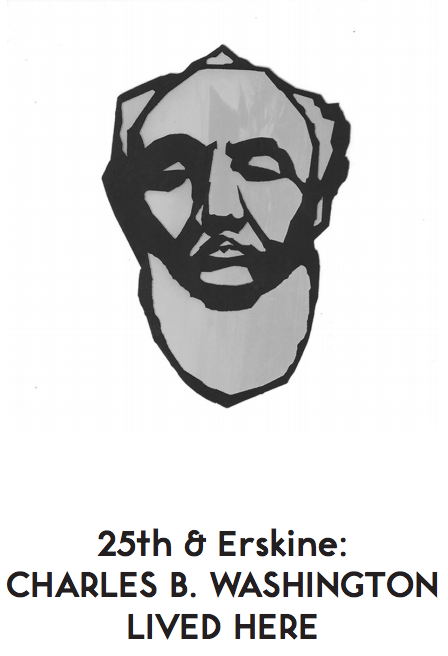
Long School has been re-envisioned as great neighborhood again. Today, the population is almost wholly African American, and the heritage of the community is seen as a valuable way to connect with current residents while keeping an eye on the future. Development has begun to take root in the neighborhood, typical of efforts like the Village East Senior Apartments on North 25th, and the Fair Deal Village Marketplace on North 24th Street.
More effort needs to be extended in order to preserve the remaining historical buildings in the neighborhood. As evidenced by the City of Omaha’s recent decision to demolish the nearby Lake Street Streetcar Barn, nothing in this neighborhood is sacrosanct.
Historic Places in the Long School Neighborhood

Despite the eager appetite of the City of Omaha’s bulldozers, there still several historic places in the neighborhood, including homes, business buildings and faith-oriented buildings. They include:
- Cleaves Temple C.M.E. Church, 2431 Decatur St.
- Bethel A.M.E. Church at 2428 Franklin St.
- Robinson Memorial Church of God in Christ (1940), 2318 N. 26th St.
- Charles B. Washington House (1905), 2402 N. 25th St.
- Bryant Center (1928), 2417 Grant St.
There are also several historic street in the neighborhood. All of these were platted by 1900, and include Erskine, Grant, Burdette, Patrick, Blondo, Parker, Decatur, Franklin, Seward, Charles and Hamilton. The Long School neighborhood also has two cool brick streets that remain from the 1890s. They are:
- North 25th Street from Hamilton to Blondo
- Patrick Street from North 24th to North 27th
Today, none of these places have been designated by the City of Omaha Landmarks Heritage Preservation Commission, and none of them are listed on the National Register of Historic Places. The City of Omaha hasn’t toured the area for its historical significance, and no citywide advocacy organization or nonprofit has showed up to rescue, preserve or otherwise save the Long School neighborhood.
You Might Like…
- A History of the 24th and Lake Historic District
- A History of the Near North Side Neighborhood
- A Biography of Helen Mahammitt (who lived in the Long School neighborhood)
MY ARTICLES ABOUT THE HISTORY OF OMAHA’S NEAR NORTH SIDE
GROUPS: Black People | Jews and African Americans | Jews | Hungarians | Scandinavians | Chinese | Italians
EVENTS: Redlining | North Omaha Riots | Stone Soul Picnic | Native Omaha Days Festival
BUSINESSES: Club Harlem | Dreamland Ballroom | Omaha Star Office | 2621 North 16th Street | Calhoun Hotel | Warden Hotel | Willis Hotel | Broadview Hotel | Carter’s Cafe | Live Wire Cafe | Fair Deal Cafe | Metoyer’s BBQ | Skeet’s | Storz Brewery | 24th Street Dairy Queen | 1324 N. 24th St. | Ritz Theater | Alhambra Theater | 2410 Lake Street | Carver Savings and Loan Association | Blue Lion Center | 9 Center Variety Store | Bali-Hi Lounge
CHURCHES: St. John’s AME Church | Zion Baptist Church | Mt. Moriah Baptist Church | St. Philip Episcopal Church | St. Benedict Catholic Parish | Holy Family Catholic Church | Bethel AME Church | Cleaves Temple CME Church | North 24th Street Worship Center
HOMES: A History of | Logan Fontenelle Housing Projects | The Sherman | The Climmie | Ernie Chambers Court aka Strelow Apartments | Hillcrest Mansion | Governor Saunders Mansion | Memmen Apartments
SCHOOLS: Kellom | Lake | Long | Cass Street | Izard Street | Dodge Street
ORGANIZATIONS: Red Dot Athletic Club | Omaha Colored Baseball League | Omaha Rockets | YMCA | Midwest Athletic Club | Charles Street Bicycle Park | DePorres Club | NWCA | Elks Hall and Iroquois Lodge 92 | American Legion Post #30 | Bryant Resource Center | People’s Hospital | Bryant Center
NEIGHBORHOODS: Long School | Logan Fontenelle Projects | Kellom Heights | Conestoga | 24th and Lake | 20th and Lake | Charles Street Projects
INDIVIDUALS: Edwin Overall | Rev. Russel Taylor | Rev. Anna R. Woodbey | Rev. Dr. John Albert Williams | Rev. John Adams, Sr. | Dr. William W. Peebles | Dr. Craig Morris | Dr. John A. Singleton, DDS | Dr. Aaron M. McMillan | Mildred Brown | Dr. Marguerita Washington | Eugene Skinner | Dr. Matthew O. Ricketts | Helen Mahammitt | Cathy Hughes | Florentine Pinkston | Amos P. Scruggs | Nathaniel Hunter | Bertha Calloway
OTHER: 26th and Lake Streetcar Shop | Webster Telephone Exchange Building | Kellom Pool | Circus Grounds | Ak-Sar-Ben Den
MY ARTICLES ABOUT HISTORIC NEIGHBORHOODS IN NORTH OMAHA
National Register of Historic Places Historic Districts in North Omaha: 24th and Lake Historic District | Benson Downtown Historic District | Country Club Historic District | Dundee/Happy Hollow Historic District | Fairacres Historic District | Fort Omaha Historic District | Minne Lusa Historic District | Nicholas Street Historic District
Historic Neighborhoods in North Omaha: Bedford Place | Belvedere Point | Bemis Park | Benson | Briggs | Bungalow City | Carter Lake, Iowa | Central Park | Clifton Hill | Collier Place | Creighton University | Crown Point | DeBolt | Druid Hill | East Omaha | Fairfax | Florence | Florence Field | Fort Omaha | Fontenelle View | Gifford Park | Gold Coast (Cathedral) | High Point | Jefferson Square | Kellom Heights | Kountze Place | Lakewood Gardens | Little Russia | Long School | Malcolm X Memorial | Miller Park | Miller Park Duplex Historic District | Monmouth Park | Montclair | Near North Side | North Downtown Omaha | Omaha View | Orchard Hill | Plum Nelly | Prettiest Mile in Omaha | Prospect Place | Raven Oaks | Redman | Saratoga | Sherman | Squatter’s Row | Sulphur Springs | Ponca Hills | Wakonda | Walnut Hill | Winspear Triangle | Wyman Heights
Lost Towns in North Omaha: Benson | Briggs | Cutler’s Park | DeBolt | East Omaha | Florence | Saratoga | Sulphur Springs | Winter Quarters
Elsewhere Online
- Long School Neighborhood AssociationLong School Neighborhood Association official website
- Long School Neighborhood Association Facebook page
- Hruska, E. (1980) The Long School Neighborhood, The: A Community Profile. University of Nebraska – Omaha.
- Omaha Planning Department (1999) “Long School Redevelopment Plan.” City of Omaha.
BONUS!



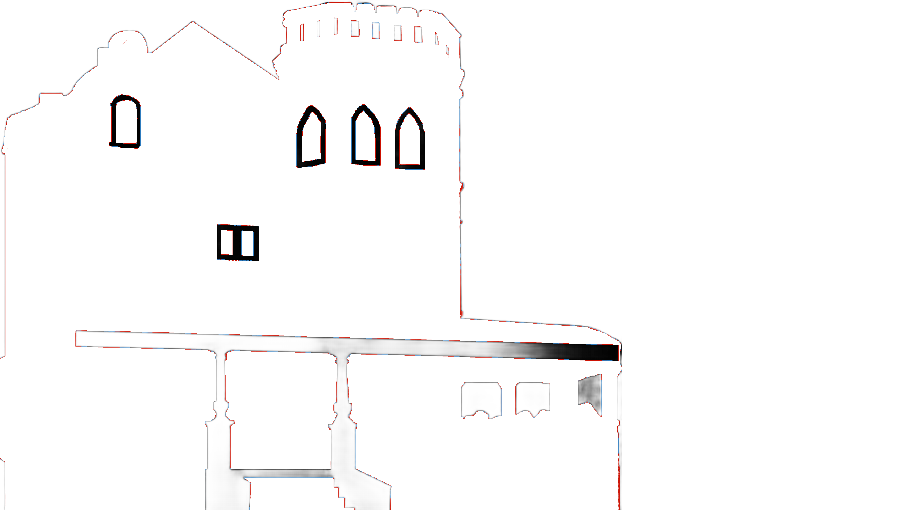



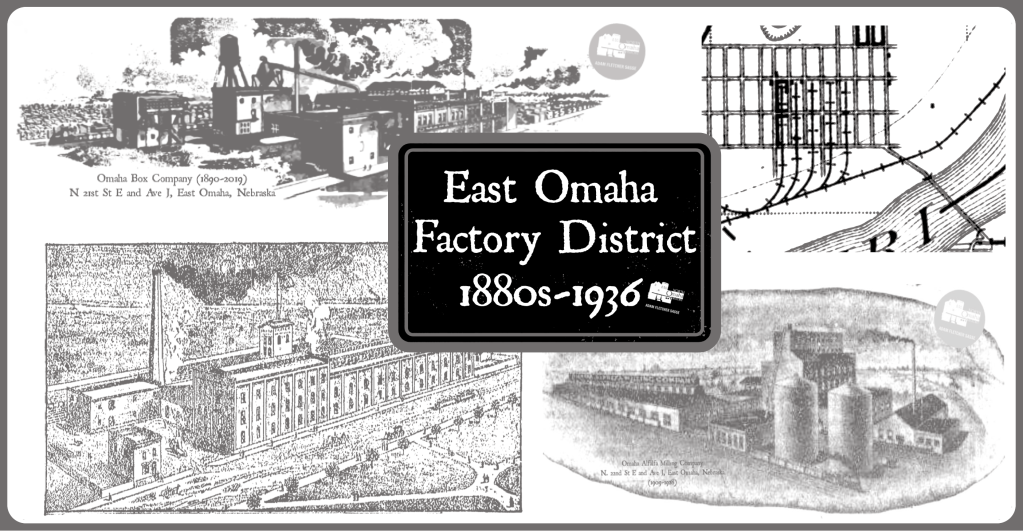
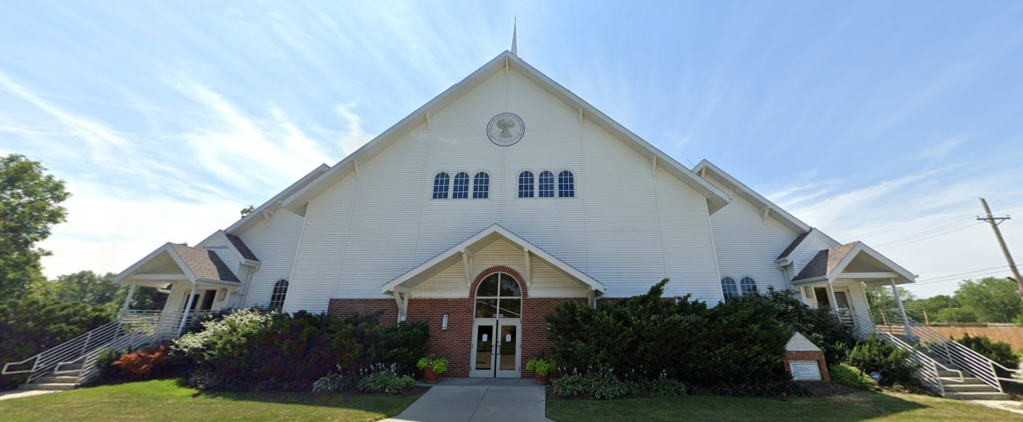
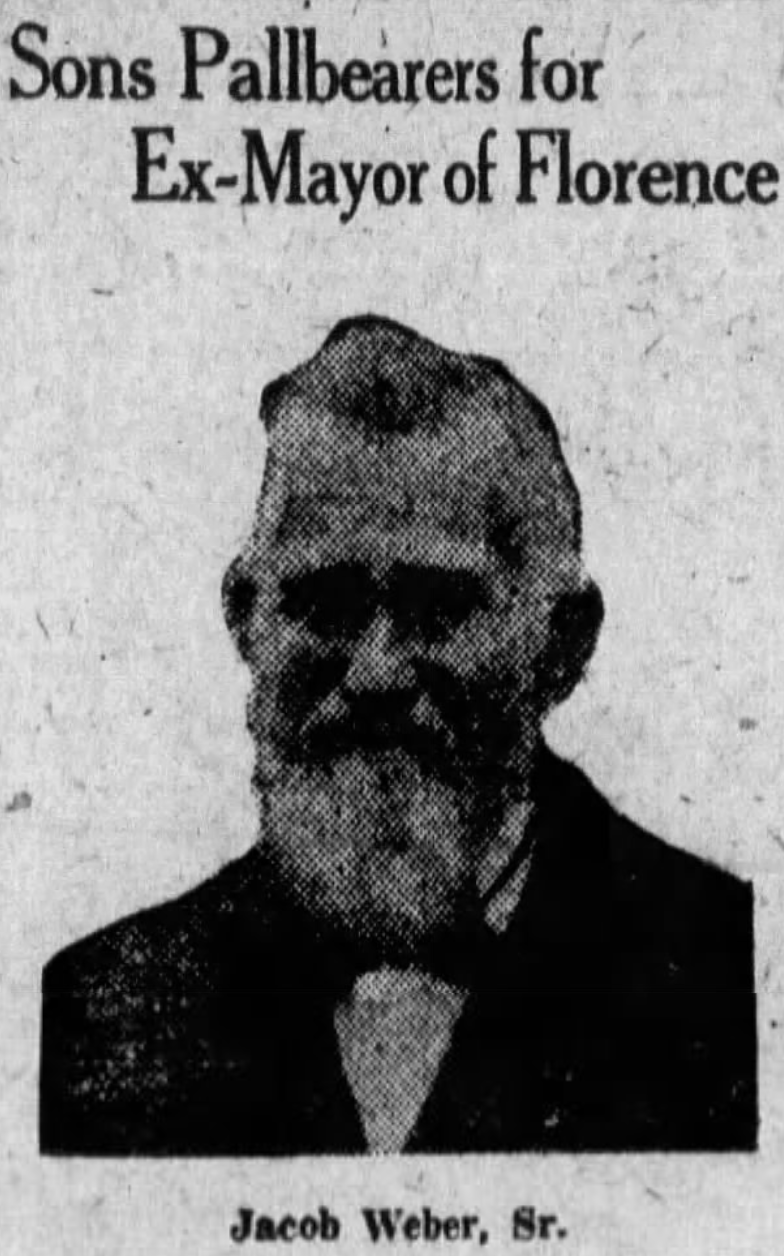
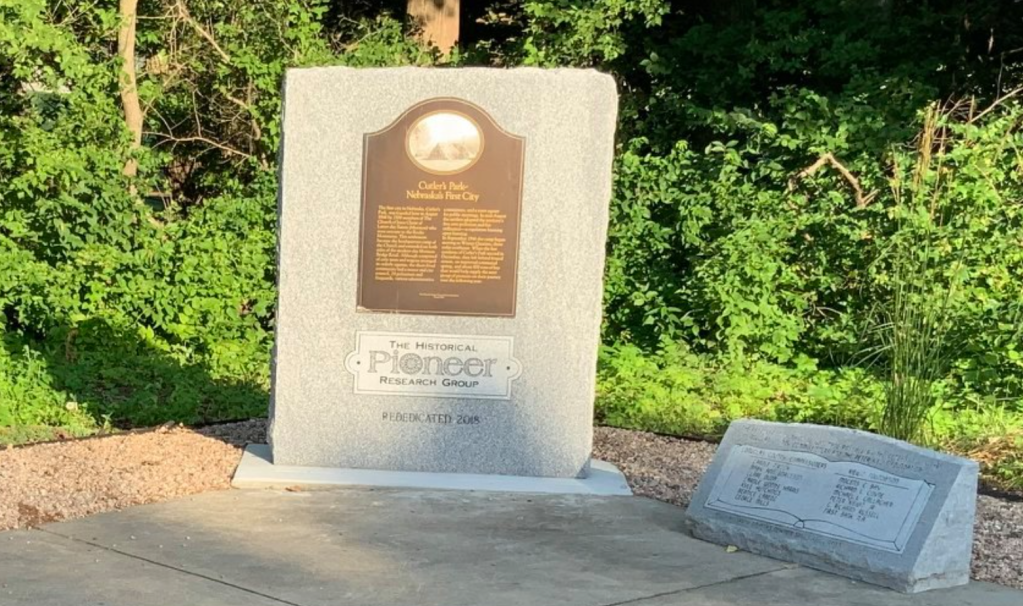
Leave a comment